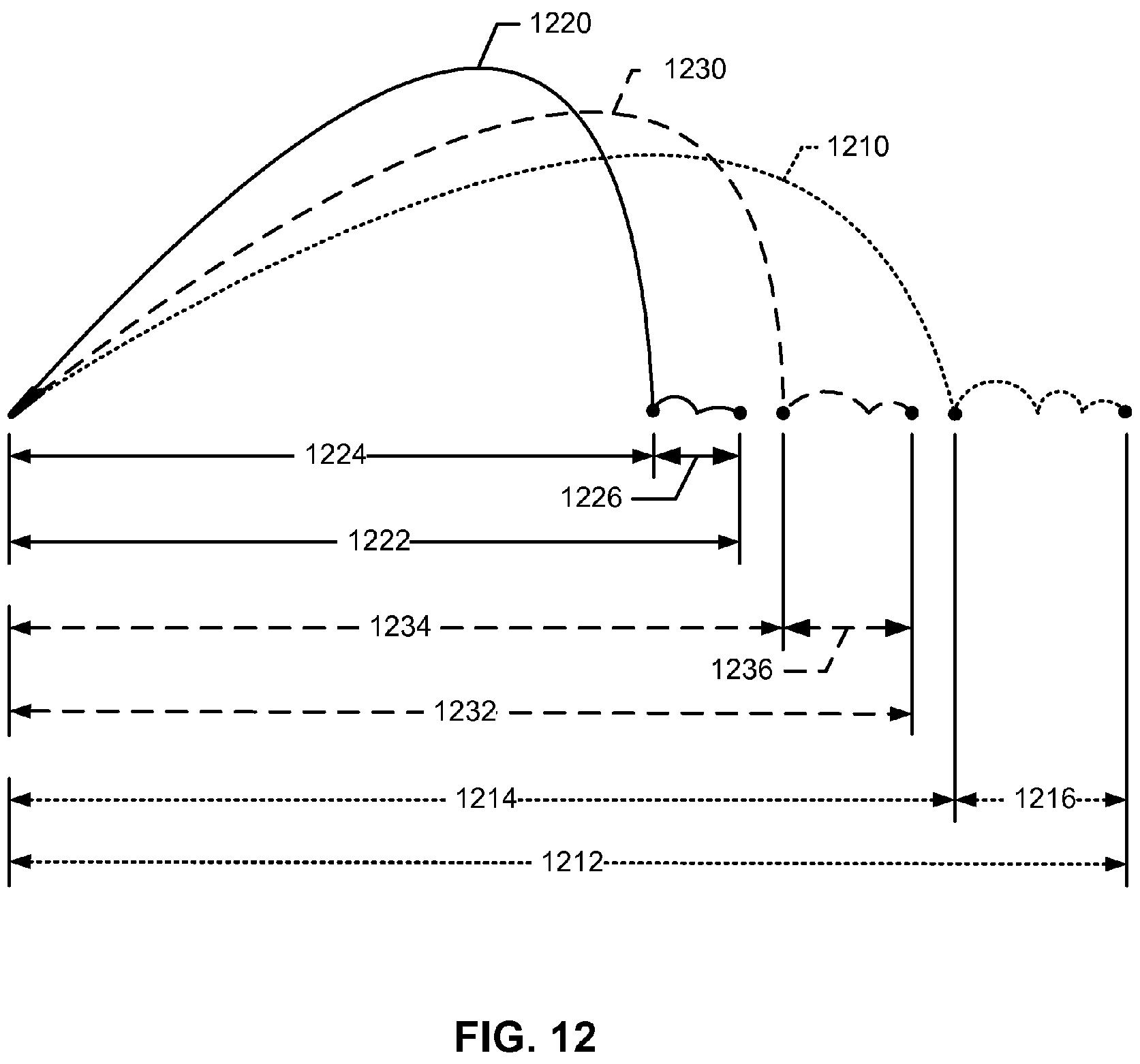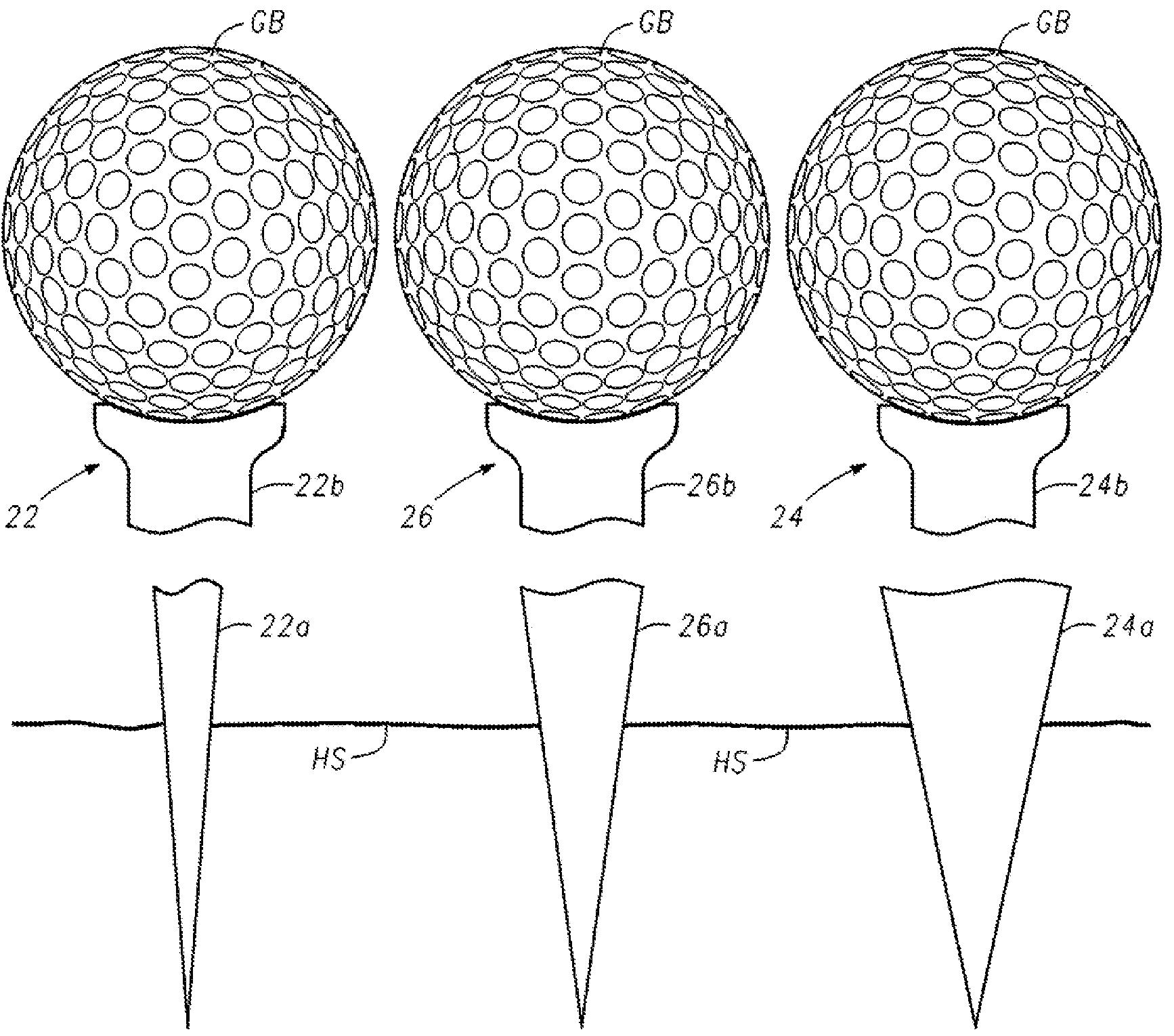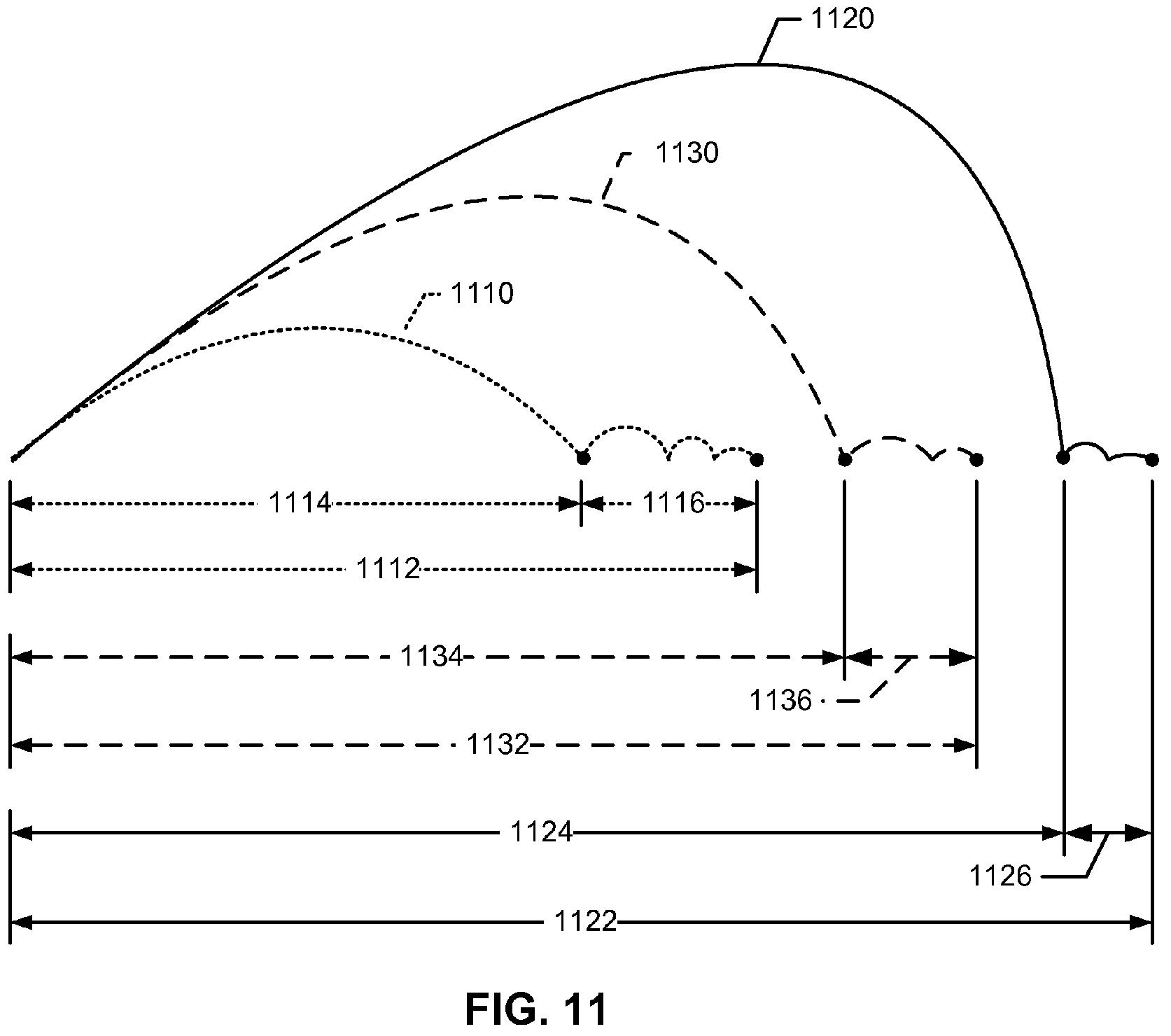More Golf Tee Concepts from PING, This Time a “Set” of Golf Tees
A few months ago I authored a post titled “PING’s New Golf Tee Designed to Minimize a Tee’s Effect on Flight Trajectory and Spin” and expressed my surprise that a big golf club OEM would have any interest in the golf tee market. Well, apparently PING does enough testing to believe that the effect of a tee on golf ball flight is more significant than most golfers believe. Just yesterday Karsten had another golf tee related patent application publish as US Pub. No. 20090233734 titled “Set of Golf Tees.” The application describes the invention as:
A set of golf tees that includes at least a low spin golf tee and a high spin golf tee. The low spin golf tee is constructed in a manner to provide decreased resistance to the deformation of a golf ball that is impacted by a golf club while resting on the low spin golf tee. The high spin golf tee is constructed in a manner to provide increased resistance to the deformation of a golf ball that is impacted by a golf club while resting on the high spin golf tee.
The application goes on to explain:
[0002] Golf tees are used to support golf balls above the ground on tee shots. When a golf ball resting on a golf tee is struck by a golf club, the golf ball is deformed and the golf tee is pushed downward resulting in resistance between the ground and the golf tee. This resistance produces an opposing force which pushes the golf ball upward. The golf ball is in contact with face of the golf club and when pushed upward results in some increased level of back spin on the golf ball as it leaves the club face. If the resistance is increased, the spin rate of the golf ball will increase. Conversely, if the resistance is decreased, the spin rate of the golf ball will decrease.
[0011] It will be understood that the first golf tee 10 produces a first spin rate (e.g., revolutions per minute (rpm)) for a golf ball that is impacted by a golf club while being supported on its upper portion 10b. The second golf tee 12 produces a second spin rate for a golf ball that is impacted by a golf club while being supported on its upper portion 12b. The second spin rate is greater than the first spin rate. The third golf tee 14 produces a third spin rate for a golf ball that is impacted by a golf club while being supported on its upper portion 14b. The third spin rate is greater than the first spin rate but less than the second spin rate.
[0012] As noted above, the first spin rate may be less than the second and third spin rates. The spin rate of a golf tee may affect the distance and the height traveled by a golf ball after being struck by a golf club. In the example of FIG. 11 (below), each of the golf tees 10, 12, and 14 may be associated with a ball flight trajectory, generally shown as 1110, 1120, and 1130, respectively. While the ball flight trajectories 1110, 1120, and 1130 may have the same ball launch angle, the ball flight trajectories 1110, 1120, and 1130 may differ in total distance, carry distance, and/or roll-out distance.
[0013] The ball flight trajectories 1110, 1120, and 1130 may be associated with an individual who generally produces relatively less spin on a golf ball. In particular, a golf ball struck by a golf club off of the first golf tee 10 may be associated with the first ball flight trajectory 1110, which may have a first total distance 1112 including a first carry distance 1114 and a first roll-out distance 1116 (e.g., the first carry distance 1114 plus the first roll-out distance 1116 equals the first total distance 1112). A golf ball struck by a golf club off of the second golf tee 12 may be associated with the second ball flight trajectory 1120, which may have a second total distance 1122 including a second carry distance 1124 and a second roll-out distance 1126 (e.g., the second carry distance 1124 plus the second roll-out distance 1126 equals the second total distance 1122). A golf ball struck by a golf club off of the third golf tee 14 may be associated with the third ball flight trajectory 1130, which may have a third total distance 1132 including a third carry distance 1134 and a third roll-out distance 1136 (e.g., the third carry distance 1134 plus the third roll-out distance 1136 equals the third total distance 1132). As a result, the first golf tee 10 may provide relatively less carry distance but more roll-out distance than either the second golf tee 12 or the third golf tee 14 whereas the second golf tee 12 may provide relatively more total distance (e.g., carry distance plus roll-out distance) than either the first golf tee 10 or the third golf tee 14.
[0014] Air resistance and rotational velocity of the golf ball during ball flight may affect the lift (i.e., Magnus force) of the golf ball. The lift of the golf ball may affect to the total distance traveled by the golf ball. Accordingly, the first golf tee 10 may provide less lift than either the second golf tee 12 or the third golf tee 14. Further, wind may reduce the amount of lift on the golf ball. In one example, an individual may use the first golf tee 10 instead of either the second golf tee 12 or the third golf tee 14 when he or she is hitting a golf ball into or against the wind because the first golf tee 10 may provide relatively less lift than either the second golf tee 12 or the third golf tee 14. In contrast, an individual may use the second golf tee 12 instead of either the first golf tee 10 or the third golf tee 14 when he or she is hitting a golf ball with the wind because the second golf tee 12 may provide relatively greater lift than either the first golf tee 10 or the third golf tee 14.
[0015] While FIG. 11 may depict the ball flight trajectories 1110, 1120, and 1130 to be sequential in distance relative to each other, the ball flight trajectories 1110, 1120, and/or 1130 may overlap with each other. Further, although FIG. 11 may depict the golf tees 10, 12, and 14 being associated with particular ball flight trajectories, the golf tees 10, 12, and 14 may be associated with other ball flight trajectories as described in detail below.
[0016] Turning to FIG. 12 (below), for example, an individual with relatively higher swing speed (e.g., more than 100 mph club head speed) may produce ball flight trajectories 1210, 1220, and 1230 when striking a golf ball with a golf club off of the golf tees, 10, 12, and 14, respectively. While the ball flight trajectories 1210, 1220, and 1230 may have the same ball launch angle, the ball flight trajectories 1210, 1220, and 1230 may differ in total distance, carry distance, and/or roll-out distance. Further, although FIG. 12 may depict the ball flight trajectories 1210, 1220, and 1230 to be sequential in distance relative to each other, the ball flight trajectories 1210, 1220, and/or 1230 may overlap with each other.
[0017] The ball flight trajectories 1210, 1120, and 1230 may be associated with an individual who generally produces relatively more spin on a golf ball. In particular, a golf ball struck by a golf club off of the first golf tee 10 may be associated with the first ball
flight trajectory 1210, which may have a first total distance 1212 including a first carry distance 1214 and a first roll-out distance 1216 (e.g., the first carry distance 1214 plus the first roll-out distance 1216 equals the first total distance 1212). A golf ball struck by a golf club off of the second golf tee 12 may be associated with the second ball flight trajectory 1220, which may have a second total distance 1222 including a second carry distance 1224 and a second roll-out distance 1226 (e.g., the second carry distance 1224 plus the second roll-out distance 1226 equals the second total distance 1222). A golf ball struck by a golf club off of the third golf tee 14 may be associated with the third ball flight trajectory 1230, which may have a third total distance 1232 including a third carry distance 1234 and a third roll-out distance 1236 (e.g., the third carry distance 1234 plus the third roll-out distance 1236 equals the third total distance 1232). As a result, the first golf tee 10 may provide relatively more carry distance and roll-out distance than either the second golf tee 12 or the third golf tee 14 whereas the second golf tee 12 may provide relatively more lift than either the first golf tee 10 or the third golf tee 14.
They just need one guy on Tour utilizing different shaped tees for different shot shapes and then amateurs around the world will be doing it.
Dave Dawsey – Keeping an Eye on Golf Tee Inventions
PS – check out other golf tee patent related posts here



